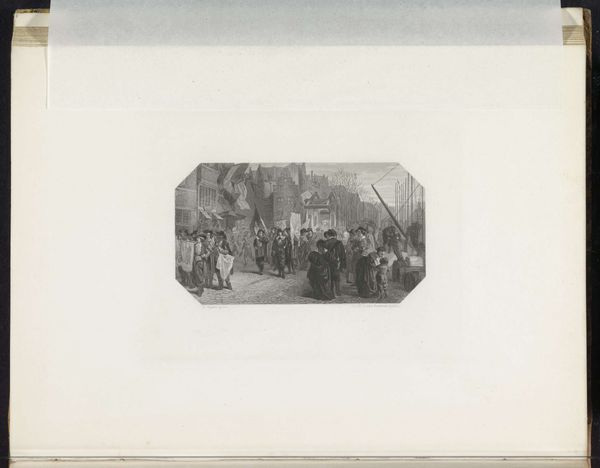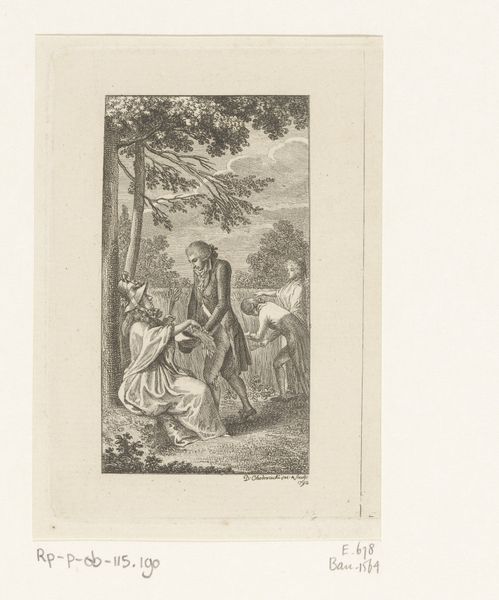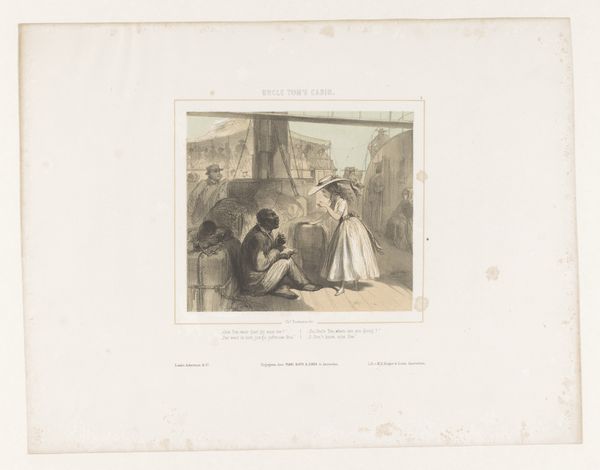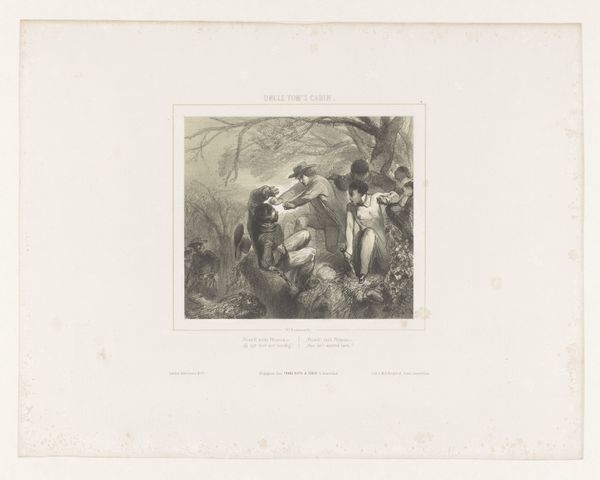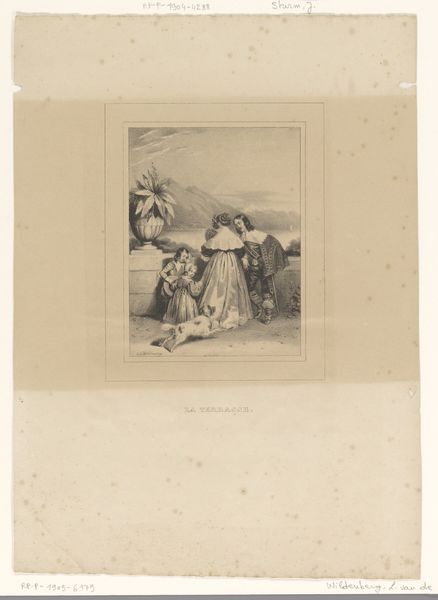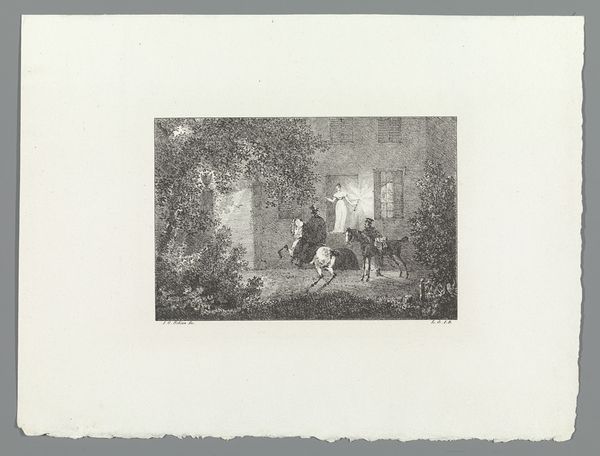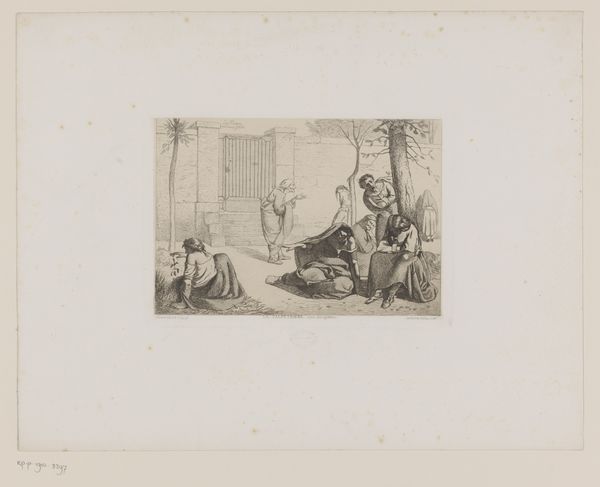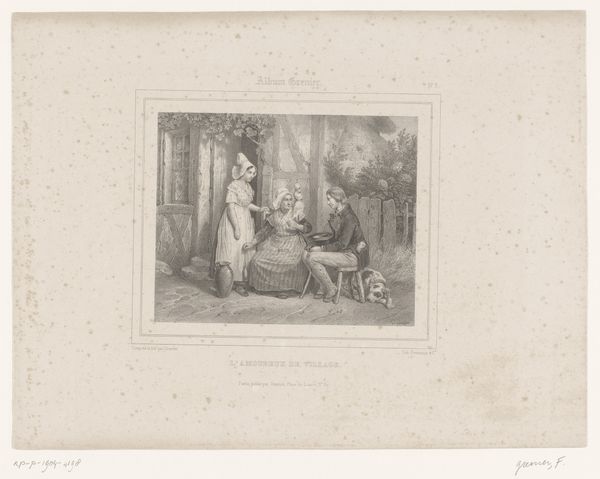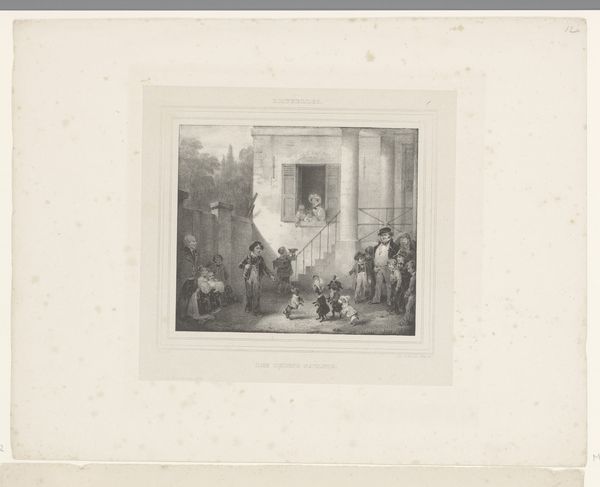
print, engraving
#
medieval
#
narrative-art
#
ink paper printed
# print
#
figuration
#
genre-painting
#
history-painting
#
academic-art
#
engraving
#
realism
Dimensions: height 190 mm, width 240 mm
Copyright: Rijks Museum: Open Domain
Editor: This is Hendrik Sluyter’s "Evangelieprediking in de 7e en 8e eeuw," from around 1865-1870. It's an engraving, so printed in ink on paper. It feels quite staged, almost like a theatre production of a historical event. What can you tell me about the context surrounding this piece? Curator: It’s crucial to view this image through the lens of 19th-century Dutch nationalism and religious revivalism. Sluyter is depicting the evangelization of the early medieval Netherlands. The ‘staging’ you observed isn't accidental, it's a deliberate attempt to create a powerful narrative – one where Christianity is presented as a civilizing force. Notice how the figures are arranged. Who is in the center of this narrative? Editor: The preacher, obviously, standing tall with his arm raised. Then, the kneeling figures appear to be local converts, perhaps? Curator: Precisely. And who surrounds them? Consider the power dynamics here. What does it tell us about how 19th-century Dutch society viewed its own history and the role of religion in shaping national identity? Editor: It seems like it glorifies the spread of Christianity, while also perhaps subtly erasing pre-existing indigenous belief systems, by suggesting they needed "civilizing"? Curator: Exactly! This is where considering the intersection of history, religion, and colonialism becomes crucial. Sluyter's work isn't just a historical depiction, it's an argument for a particular interpretation of the past that bolsters a certain contemporary ideology. By looking at how the scene is composed, and which figures are presented as central or marginal, we can explore whose voices are being amplified and whose are being suppressed. Editor: So, what I initially read as a straightforward historical image is actually much more complex – a kind of political statement disguised as historical documentation? Curator: Precisely! That's why unpacking the social context around this work can offer fresh insights into our cultural evolution. Editor: I never considered the artist’s point of view back then when making it; It's definitely changed my perception!
Comments
No comments
Be the first to comment and join the conversation on the ultimate creative platform.
